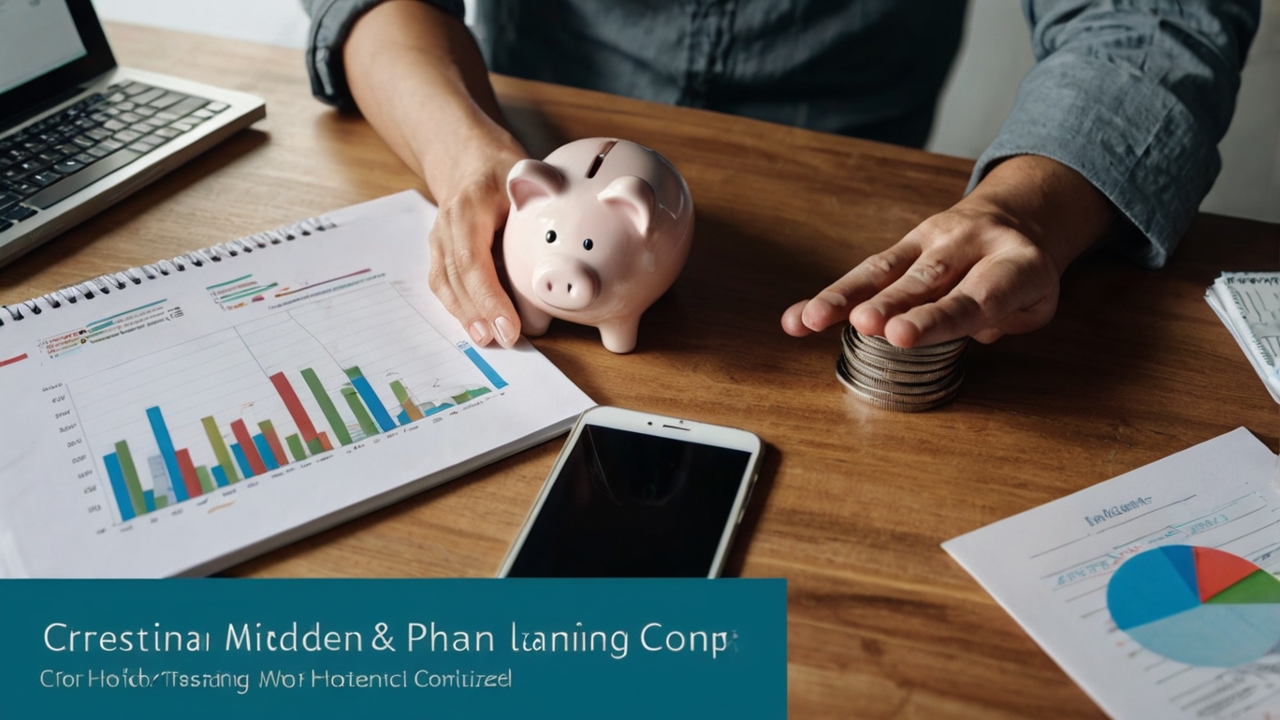Digital Saving Revolution: How Mobile Apps Transform Your Savings
In our digital age, saving is no longer just a complex calculation, but an interactive experience accessible to everyone thanks to mobile apps. These apps not only help you track your expenses, but also provide advanced tools to analyze your spending habits, suggest ways to reduce expenses, and even invest smartly to increase your savings.
Chapter 1: Why is Digital Saving Important?
Digital saving represents a quantum leap in personal finance management. Here are some reasons why this method is essential in today's world:
- Ease and Accessibility: Apps are available 24/7 and can be accessed from anywhere.
- Accurate Tracking: Provides a clear and detailed view of where your money is going.
- Smart Analysis: Helps you understand your spending habits and make better financial decisions.
- Motivation and Reminders: Sends regular reminders to encourage you to stick to your savings plans.
- Automated Investing: Some apps offer automatic investment options tailored to your risk tolerance.
Chapter 2: Types of Saving Apps and How They Work
Saving apps vary to meet different needs. Here are some main types:
- Expense Tracking Apps: Such as Mint and Personal Capital, which aggregate your financial data from various sources (bank accounts, credit cards) to provide a comprehensive view of your spending.
- Budgeting Apps: Such as YNAB (You Need A Budget) and PocketGuard, which help you create a monthly budget and stick to it.
- Investing Apps: Such as Robinhood and Acorns, which allow you to invest in stocks, bonds, and ETFs (Exchange Traded Funds) with small amounts.
- Cashback Apps: Such as Rakuten and Ibotta, which reward you with cash for your everyday purchases.
- Automatic Savings Apps: Such as Digit and Qapital, which automatically transfer small amounts from your checking account to your savings account.
Chapter 3: Examples of Leading Saving Apps in the Arab Market
The Arab market is experiencing growth in the use of saving apps. Here are some examples:
- "My Bank" App: An app affiliated with a major bank in the region, offering expense tracking and budget management services.
- "Piggy Bank" App: An independent app that focuses on encouraging children and young people to save through rewards and challenges.
- Telecom Company Apps: Some telecom companies offer loyalty programs that reward customers with points that can be redeemed for discounts or free services.
Chapter 4: How to Choose the Right App for You?
Choosing the right app depends on your needs and financial goals. Here are some tips:
- Define Your Goals: Do you want to track your expenses, create a budget, invest, or save automatically?
- Look for Highly Rated Apps: Read user reviews and check app ratings in app stores.
- Check Security and Privacy: Make sure the app uses strong encryption to protect your financial data.
- Try Free Trials: Many apps offer free trials that allow you to try out the features before subscribing.
- Compare Fees and Subscriptions: Some apps are free, while others require a monthly or annual subscription.
Chapter 5: Effective Saving Strategies Using Apps
Apps are just tools, but success depends on how you use them. Here are some effective strategies:
- Track Your Expenses Regularly: Monitor your daily and weekly spending to identify areas where you can reduce expenses.
- Set a Realistic Budget: Determine how much you can spend on each spending category (food, housing, transportation, entertainment).
- Use the Alert Feature: Activate alerts to remind you of bill payment deadlines and avoid late fees.
- Take Advantage of Cashback Offers: Look for deals and discounts available through cashback apps.
- Automate Savings: Set up automatic transfers from your checking account to your savings account each month.
Chapter 6: Potential Challenges and Risks
Despite the many benefits, there are some challenges and risks you should be aware of:
- Security and Privacy: The risk of data breaches and identity theft.
- Over-Reliance on Technology: You may lose the ability to manage your money without apps.
- Overspending: Easy access to credit through apps may encourage overspending.
- Hidden Fees: Some apps may charge unclear fees.
- Poor Investment Decisions: Investing without sufficient knowledge may lead to financial losses.
Chapter 7: Tips for Keeping Your Financial Information Secure
Security is the top priority when using saving apps. Here are some tips:
- Use Strong and Unique Passwords: Do not use the same password for multiple accounts.
- Enable Two-Factor Authentication: This feature adds an extra layer of security to your account.
- Update Apps Regularly: Updates include important security patches.
- Be Wary of Phishing Emails: Do not click on suspicious links or provide personal information.
- Review Your Financial Data Regularly: Monitor your accounts for any unauthorized activity.
Chapter 8: The Future of Digital Saving
The future of digital saving is promising, with continuous advancements in technology and artificial intelligence. We expect to see more:
- Personalized Apps: Apps designed specifically to meet your unique financial needs and goals.
- Predictive Analytics: Apps that use AI to predict your spending patterns and provide personalized advice.
- Integration with Wearable Devices: Apps that integrate with smartwatches and fitness trackers to motivate you to achieve your financial and health goals.
- Social Investing: Apps that allow you to invest in companies that align with your values and beliefs.
Chapter 9: Real-Life Success Stories
Many people around the world have achieved great success in saving and managing their money using mobile apps. For example:
- A young man managed to pay off his student debt: Using an expense tracking app, he was able to identify areas where he was spending too much money and reduce them.
- A family saved a significant amount of money to buy a house: Using a budgeting app, they were able to create a realistic savings plan and stick to it.
- A novice investor made good profits: Using an investment app, he learned the basics of investing and began building a diversified investment portfolio.
Chapter 10: Conclusion and Final Tips
Mobile apps are a powerful tool for achieving your financial goals. By choosing the right app and using it effectively, you can track your expenses, create a budget, invest, and save automatically. Remember that security and privacy are the top priority, and be aware of potential risks. Start today and harness the power of technology to achieve financial independence.
Additional Tip: Do not hesitate to consult a professional financial advisor for personalized advice tailored to your financial situation.




